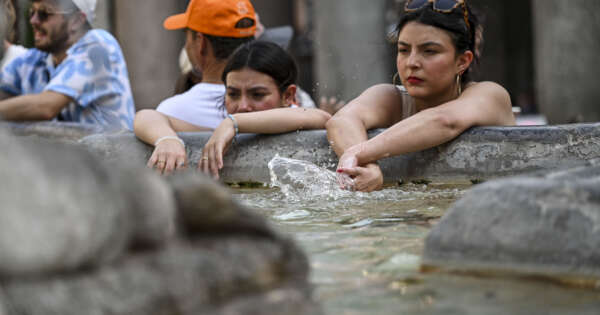In Australia, I raced against time to save the numbat, the world’s most endangered animal, a unique marsupial of only a thousand people left, most of them in New South Wales. .
The numbat population has been wiped out due to habitat loss in arid and semi-arid regions, changes in land use, frequent and increasingly destructive fires and attacks by predators such as foxes and feral cats. For these reasons, numbats – which eat about 20,000 termites a day – have not been seen in the wild in New South Wales (Nsw) for more than 100 years, ABC Australia reported: they have become rare, for example. Of the black rhinoceros, one of the most endangered animals in the world. A few hundred surviving numbat specimens have been found in many Australian zoos, from Perth to Sydney, as well as in the wild in Western Australia.
To reintroduce it into the wilderness, the Australian Nature and Wildlife Conservation Agency is building extensive sanctuaries to keep predators away from numbats and help the species reproduce in the wild. One of these reserves, complete with an electrified fencing, is Mont Gibson, a small mammal conservation area of more than 7,800 hectares, a 30-minute drive from Perth, the capital of Western Australia, where 64 samples of numbat were reintroduced in. Temperate nature.
These small sacks are also protected in the Joule Joule Reserve, in southwestern New South Wales, in an area of 9,500 hectares “free of predators”, with an electrical barrier two meters high and 42 km long. “Numbat’s fate really hangs by a thread. “There are probably only 800-1000 numbats left in the wild,” said Lawrence Berry, a wildlife ecologist for Australia’s Wildlife Conservancy. Scientists hope that creating a safe haven for endangered species such as numbats will restore populations, ensuring their survival and expansion in the future.
The Australian Wildlife Conservation, National Parks and Wildlife Services (NPWS) has invested 41.3 million in an ambitious 10-year project to build three protected sites in New South Wales, in the three parks in Stort National Park, Bellega National Park and Mali Cliffs. The national park, to give new life to the Bilbi, or Macrotis, another genus of Gluttonous Mars.
According to estimates by the Australian WWF, in the fires that ravaged part of the country at the end of 2019, at least three billion animals – including koalas, kangaroos and other species – could have disappeared. A tragic toll not only includes animals killed directly by the flames, but also those who did not find food or their habitat was destroyed, and were thus forced to migrate.
Follow LaZampa.it at Facebook (click here)And the Twitter (click here) H Instagram (click here)

“Devoted bacon guru. Award-winning explorer. Internet junkie. Web lover.”





